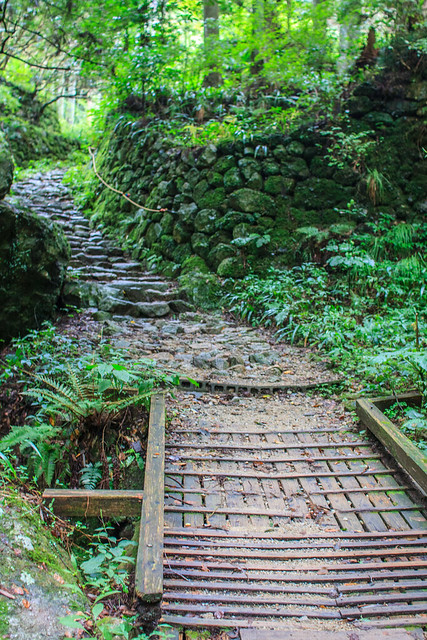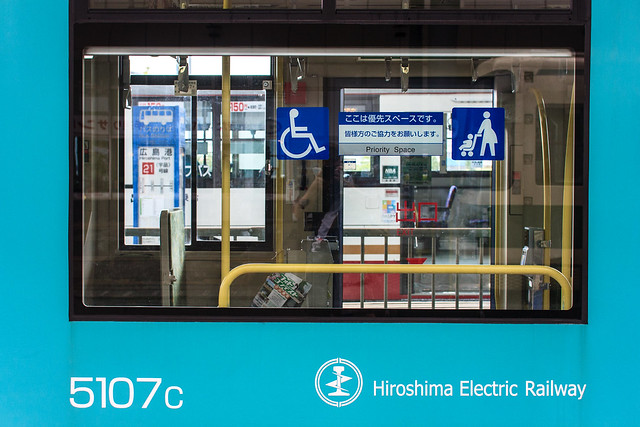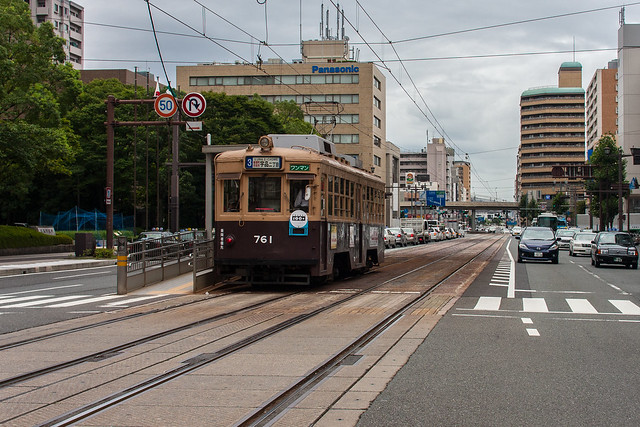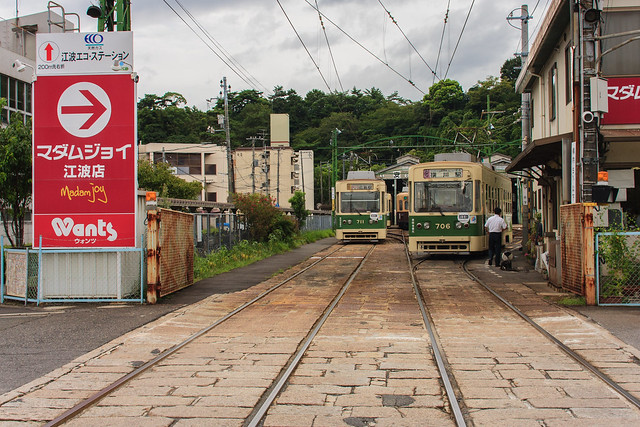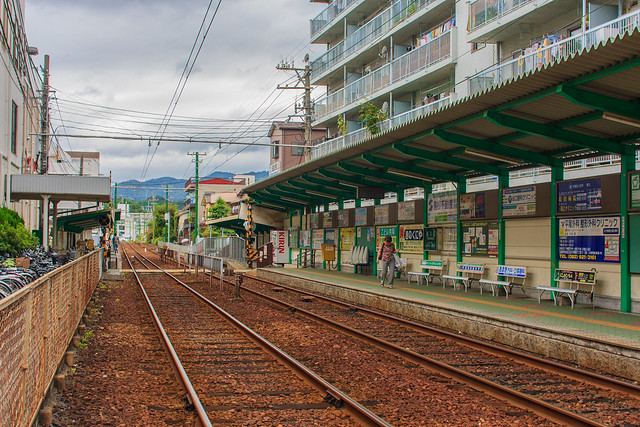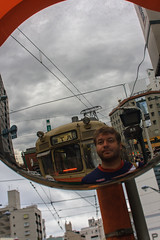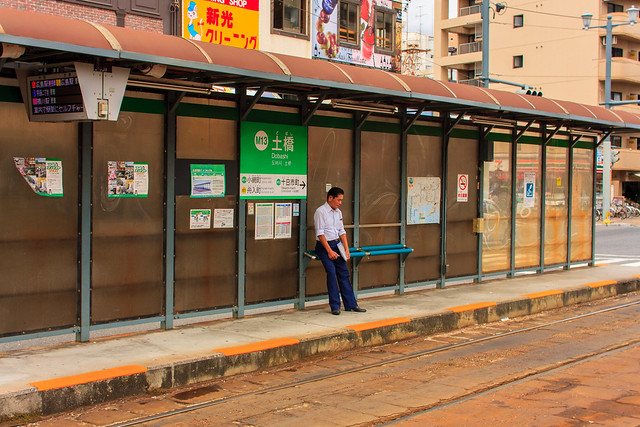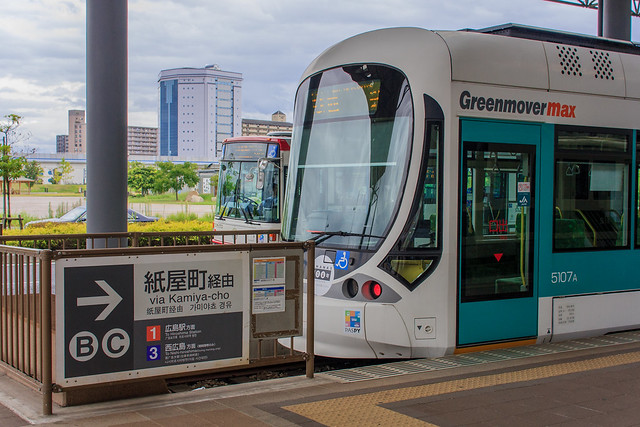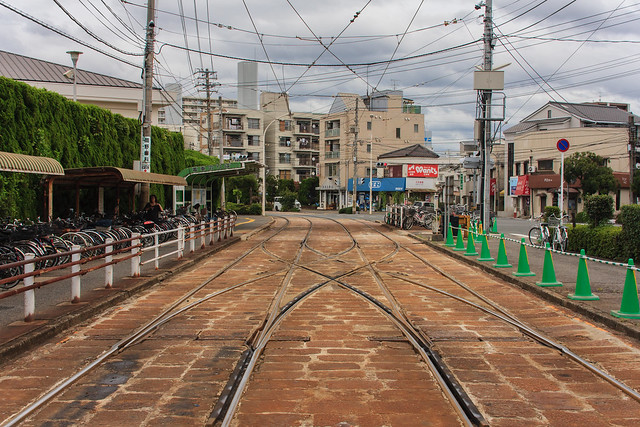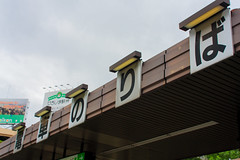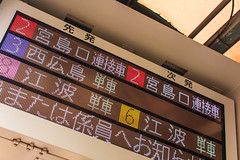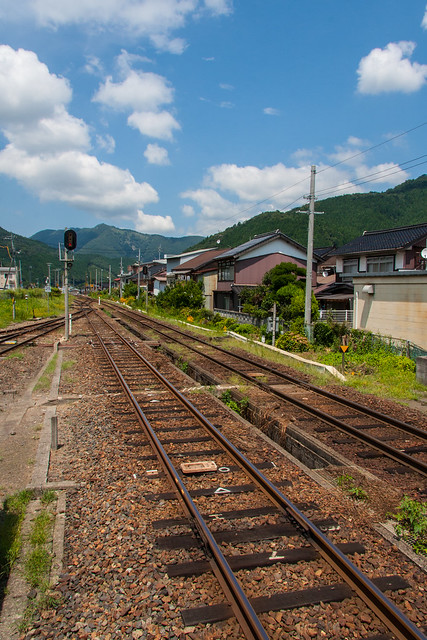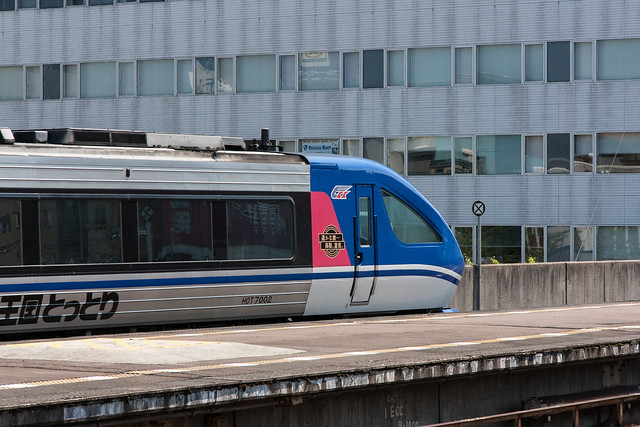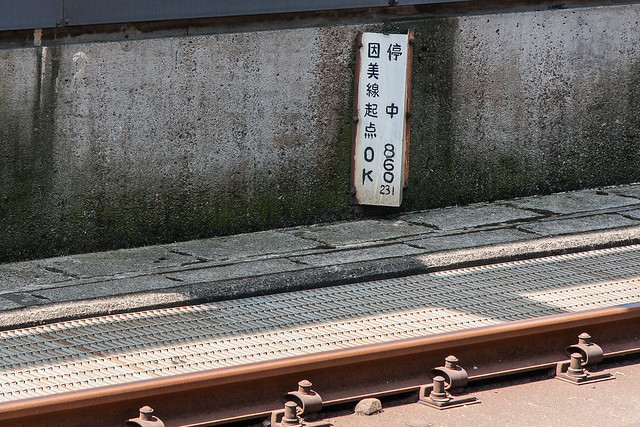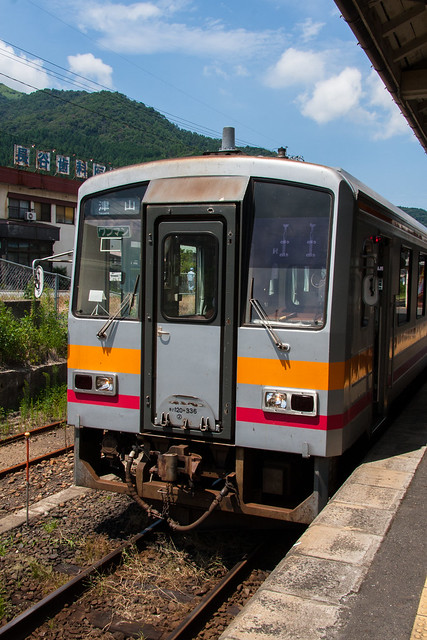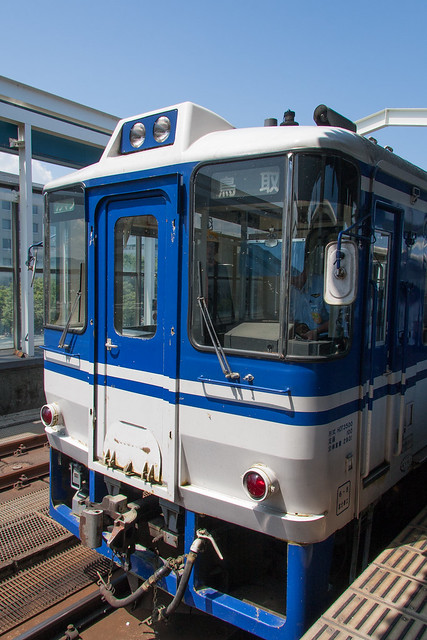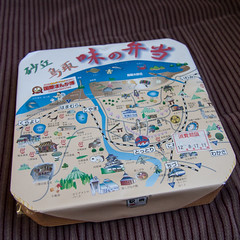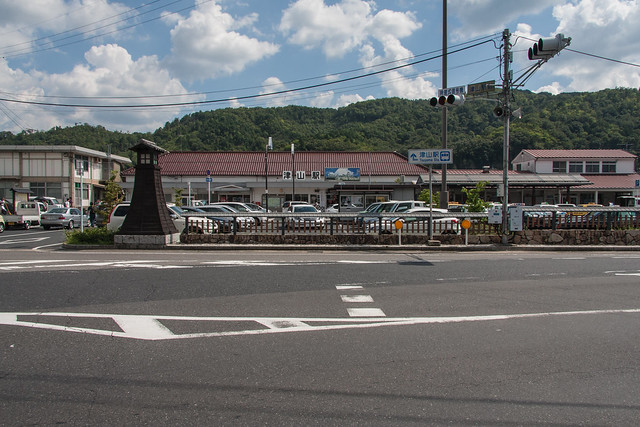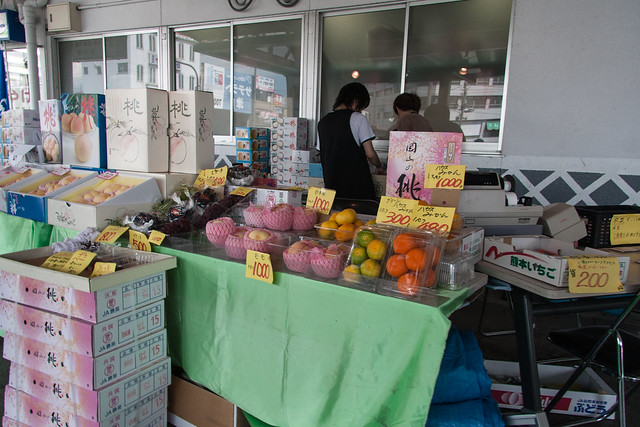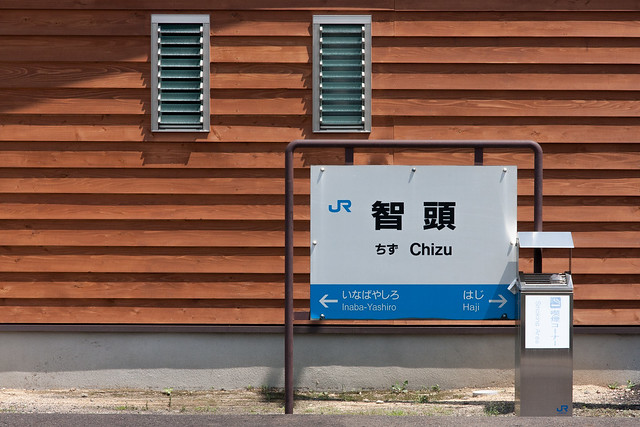 |
| The start of the trail |
Place Name: Sefuku-ji 施福寺
Type: Temple 寺
Location: Izumi city, Osaka Prefecture, JAPAN
Latitude: 34.392908
Longitude: 135.511578
Date of Visit: October 1, 2012
Access:
Izumi city Orange Bus Makiosan route (槇尾山) from Nankai Izumiotsu station on the Nankai Main Line or Izumichuo station on the Senboku Line.
Fee: None
Hours:
March through November: 8:00~17:00
December through February: 8:00~16:00
Web: None
The road to Sefuku-ji goes from the crammed residential areas to rural mountainside quite quickly. Soon the road turns into a single track with a stream on one side and a forested slope on the other. It felt like driving through a national park back in the USA. A single free parking lot is at the end with a hand full of buildings.
At the start of the walk I thought it was just going to be a few minutes, but then the concrete slope got steeper. Then it got even steeper. After passing a few impromptu miniature waterfalls thanks to the typhoon that passed over the area the day before and one perennial waterfall made by the stream paralleling the trail we reached a gate and a sign. The sign read it would take 30 minutes to reach the temple from here. I was excited for a good hike through this forest.
Soon after passing through the gate we stumbled upon a snake on the trail. A bit further up we encountered a wooden bridge over the stream. Yuko was nervous that it would support her let alone me with our daughter, Mia, on my back. By then the path turns to dirt and stone broken up with stone stairs. Along the path short stone monoliths are placed in the ground with a number and the kanji 丁 carved into them. There are 6 that I noticed with #6 in front of the temple gate at the bottom of the trail. By the time you get to #2 the route is predominately stairs. We met a woman on the way up. She hikes up to the temple everyday to loose weight. I wish I had her fortitude. Overall, the hike up is not too hard and we completed it well within the 30 minute estimate on the sign below. Going down is a breeze.
 |
| More stairs! |
At the top the temple sits on the Osaka bay side of a flat area. A small yard has a collection of random benches and tables, a public restroom, a small udon shop and a few statues. The view looking east towards Nara prefecture is of absolute untouched wilderness. The only man made thing in view is a mine at the bottom of the valley that you have to strain to get a good look at.
Right as we got to the temple an older man in casual clothes asked us if we came to get our scroll signed. We said yes and he told us to wait a second with a great big smile. We sat down and took the now awake Mia out of the backpack. The man, who turned out the be the obosan, quickly came back. Before I noticed he had picked up Mia, started carrying her around the temple and playing with her. Mia typically is good with strangers, but she does not let everyone pick her up like that. She must have sensed that he was a good guy. We have met many interesting and helpful obosan on our route, but none of them have been as cheerful as he was.
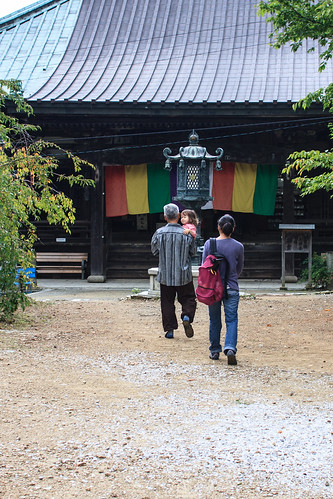 |
| Mia's new friend |
Yuko commented that going to temples clears her head, and I totally agree. The nature and the calmness up on the top of that mountain was a great refresher--a detox for the mind.
We did not stay long as it was getting dark and we had to hike back down the hill. Only a few minutes into the walk back we found some blood on the stone and a pair of bent eye glasses. Someone must had tripped. We checked the area to see if someone had slipped down the hill, picked up the glasses and rushed down to the shop. On the way we met a woman hiking up but she did not see anyone injured coming down. Getting down to the small shop we found out that a man from Nagoya had hurt himself. An ambulance had picked him up, but he did not appear very hurt to the people in the shop. After taping the glasses to the only car with Nagoya plates in the parking lot we headed to a super-sento in nearby Tondabayashi to end the day's adventure.
 |
| Some of the benches and the view towards Nara |
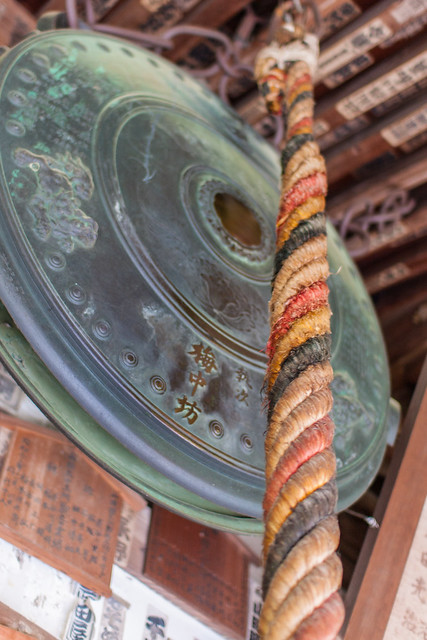 |
| The temple bell |
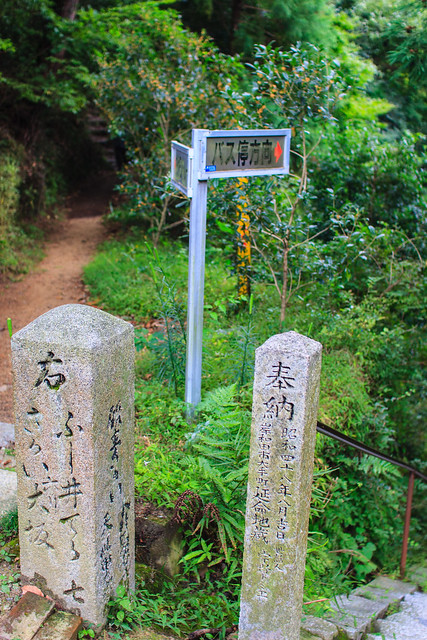 |
| The way back |
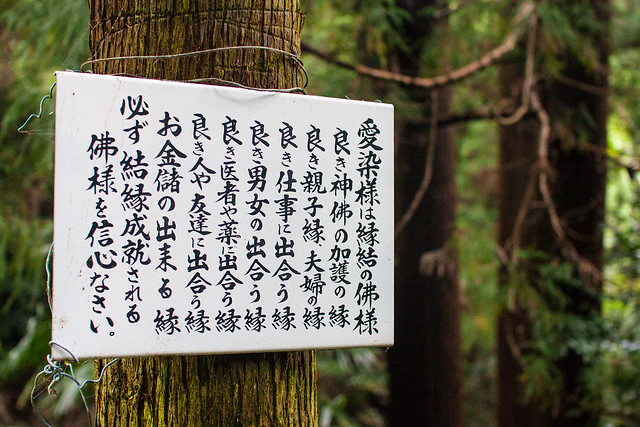 |
| Praying at Seifuku-ji covers all the bases: good children, good spousal relationships, good job, good health, good friends, and lots of money. |
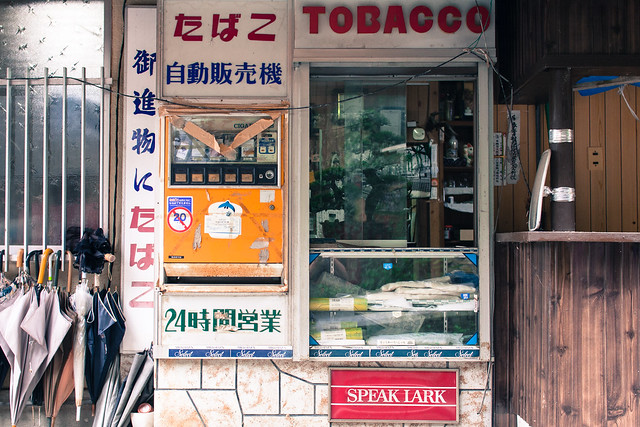 |
| One of the stores by the parking lot |
大きな地図で見る
